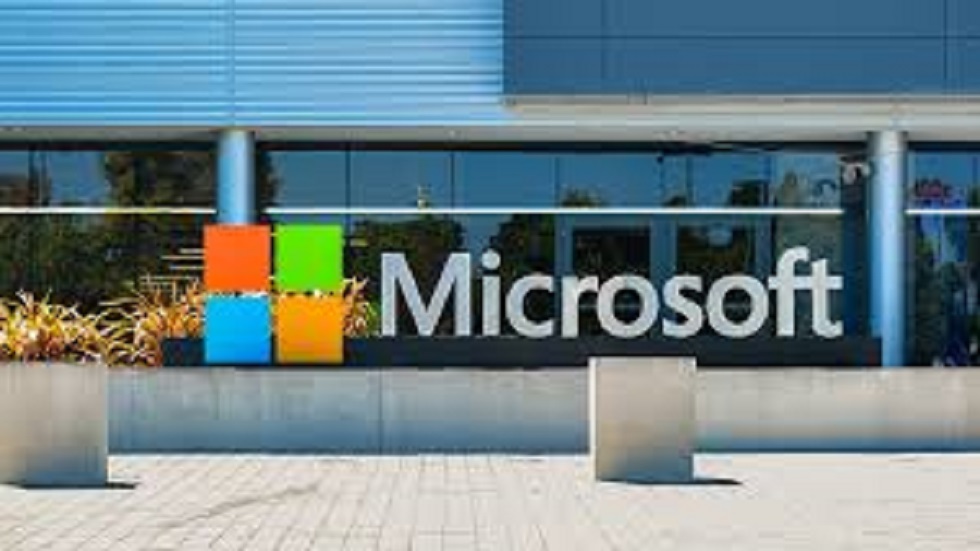
by Sangeetha | Dec 18, 2018 | Server and storage solutions
Chart a path forward for your workloads for Window Server 2008 End of Support will be Window Server 2019?
Two choices to protect your workload by migrating or upgrade it on-premise
Get associate with Navigator System for free workload assessment to dedicated IT support
Support ends for Windows Server 2008/2008 R2 on January 14, 2020
Microsoft is ending all support for Windows Server 2008 and Windows 7 in January 2020.
1) No security updates – there will be no access to critical security updates, open to potential business interruptions, attacks and loss of data
2) Compliance concerns – as support ends, your organisation may fail to meet compliance standards and industry regulations
3) Maintenance costs – Navigator system have prepared AMC upgrade options for you to maintain legacy server, storage, firewalls, network systems and other tools can become easy to maintain quickly…
Migrate to Azure Virtual Machines – Re-host Windows Server 2008 and 2008 R2 workloads in Azure, Microsoft’s up-to-date global cloud platform. Microsoft is offering three years of free extended security updates to organizations who rehost their applications in Virtual Machines in Azure
Upgrade to the Current Version of Windows or SQL – For the same hardware to upgrade from 2008/R2 to a Windows Server OS 2012 and then to Windows server 2016 /Windows Server 2019 and data platform.
SQL Server 2017 offers enhanced security features like Alway Encrypted technology, as well as new analytics features for real time analysis. Build new SQL servers and new IIS hosts, and then migrate the applications rather than upgrade the OS.
Windows Server 2019 brings enhanced container support for Kubernetes, and new security capabilities like Windows Advanced Threat Protection.
Navigator system: Any issue related to server we will always help to client regarding server support & maintenance, installation, and upgrade, also rent DELL, HP, IBM, Oracle, SUN servers at best price.
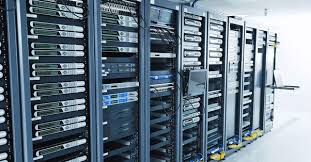
by Sangeetha | Oct 26, 2018 | Server and storage solutions
To serve your business network environments, there are several types of servers available in the market. These different types of servers work in different roles to provide a greater accuracy in business workouts.
Database Server
Database Server refers to the back-end system of a database application using client architecture. This workload relies on a higher-end server to host the database. It performs tasks such as data storage, analysis, manipulation, archiving and other non-user specification tasks.
File Server
A file server for central storage and management of data files, so that other computers on the same network can access all the files. These types of servers allow users to share data and information over a network without having any physical transfer. Any computer on a specific network can be configured as a host to act as a file server. It acts as a remote hard disc drive for other computers on a similar network.
POS Server
POS (Point Of Sale) Server helps computer based order-entry technology, mostly used in restaurants, bars, and shopping malls to capture, record data, orders, and to display or print bills and tickets. The POS, server holds a central database to which all the POS terminals communicate regarding data.
Print Server
A software application that manages several print requests and makes printer queue status information available to network administrators and other end users. Print servers are used in both small and big enterprises. A dedicated computer serving as a print server can manage hundreds of printers of a large organization.
Web Server
A web server, programming that serves the files from web pages to web users. Every web server has a domain name and IP address. If any user enters an URL in the browser, this sends a request to the web server. Then the server fetches the page and sends it to the browser. Any computer can be used as a web server, just by installing server software and connecting it to the internet. Apache and Internet Information Server (IIS) are two leading web servers. These servers are used for hosting websites and internet sites.
We, Navigator System, leading service provider assist server installation and maintenance service. We OEM partner with industry leaders to offer you the very best service. Call us 9986288377 to share your problems with our skilled technicians.
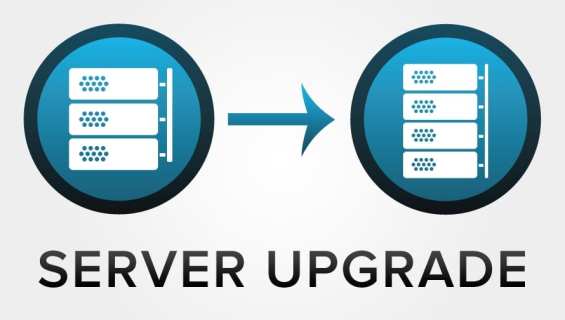
by Sangeetha | Oct 26, 2018 | Server and storage solutions
Server hardware maintenance will maximize its potential which helps a business stay competitive equally avoids purchasing new server hardware. Server hardware upgrade can help keep a server performance required by the application.
Server RAM Upgrade
When upgrading a server focus in the RAM, it will make their computer run faster.
Server CPU Upgrade
It’s much more efficient to upgrade the CPU definitely will increase the speed of operation and, in cases, make more cores available so you can multitask with ease.
Server Storage Upgrade
Sometimes upgrading HDD drives will give you better performance, as you may get a faster read/write speed on your drive, which will make the access time on it faster. Additionally, upgrading to solid-state drives will give you a considerable upgrade in access time.
In short, server upgrades always require proper planning. You should remember to ensure your systems perform best:
Back Up
Your data, that is important. Follow standard practice to back all data up prior to an upgrade of your server. A general rule: Never make changes to a server — even a minor upgrade — before confirming there is a verified data backup. Whenever you power a server down, there is no guarantee it will come back online.
Change One at a Time
You may be eager to complete multiple upgrades simultaneously in a single shutdown, but tasks should all be performed separately. When multiple changes were made at once, the process of isolating the change responsible for the error is more difficult to find the wrong a day or two later. If a single change is introduced, it’s much easier to track the error.
Keep Close Watch
After upgrading a server, never assume it went off without a problem just because it booted back into its OS with no visible errors. This is a critical time to monitor log files, error reports, backup operations, and other functions more closely than ever. Leverage internal performance reports or third-party monitoring utilities to ensure everything is performing as it should.
Confirm the Operating System
Check the operating system of the server which is running. When multiple boxes host a collection of operating systems, by performing a quick audit of the system to be upgraded, you can confirm the OS is compatible and will be able to use the additional resources being installed.
Don’t Assume the Output
Whenever installing/Upgrading new hardware, don’t assume the device will plug-and-play well with the server’s operating system. Before ordering upgrades, search online and visit the server manufacturer’s forums to find out what issues other users encountered when installing the same component on the same OS. Also, confirm the component is listed on the OS vendor’s hardware compatibility list.
Always Save Records
Be sure to maintain log files for each server. Within the server documentation, make a note that the component was upgraded. Include the manufacturer, vendor and even the order number and serial numbers, whenever possible. It is also helpful to include warranty and support information. The more documentation you have, the easier it will be to isolate and repair issues that may arise in the future.
Need help in maintaining the server for your datacenter? Can’t seem to get your set up? Shoot us an email at Sales@navigatorsystem.com or give us a call at 9986288377.

by Sangeetha | Oct 25, 2018 | Server and storage solutions
Server maintenance is an easy task by determining where to start the IT maintenance process on your own. Here are some tips for Server Maintenance.
- Create a schedule for your server maintenance. Schedule this work during the less work of your business day. It may be daily, weekly or monthly but punctually.
- Regularly check your server’s event and error logs. Always keep an eye on alert and warnings. So that you can fix them before they crashes out your server.
- Check server log files, folder permissions, and hard disc space during maintenance.
- Always keep your server updated. Also can set the automatic update option for off-hours.
- Optimize server ram and swap usage.
- Check your server backup system is working properly or not. It may cause you all the data loose.
- Check for network temperature applications to ensure that your server doesn’t get overheated in the busiest part of your office working day.
- If you are using a server control panel then also update it
- Don’t add any third party software to your server. Do it if that is an absolute necessary for you.
- Uninstall or update outdated web applications. They may cause unwanted security issues
These are simple but effective tips can increase your server’s work efficiency.
For server Repair, server performance complaints, network up-gradation, and other IT solutions contact Navigator System today. We can solve all your problems in a one-time service or with a simple contract that gives you the assurance that you have a backup service available 24/7 SLA Annual Maintenance Contract.
Visit our website https://navigatorsystem.com to know more about us and our works
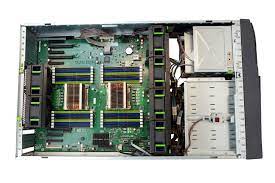
by Sangeetha | Jun 26, 2018 | Server and storage solutions
Fujitsu Primergy TX300 S7 Server Monitoring and Maintenance
Navigator systems provide Fujitsu Primergy TX300 S7 server monitoring and maintenance. As a Comprehensive, reliable, responsive and efficient 3rd party server monitoring and maintenance service provider navigator system offers a great overview of the performance of your server in an easy to understand format.
- The no-compromise tower server Fujitsu Primergy TX300 S7 features two Intel® Xeon® E5 family 6GB general-purpose computing, processors on graphics processing units (GPGPU) for intensive computational applications.
- Navigator System will continuously monitor your server hardware without any risk of transit issues.
End of Service Life ( EOSL ) for Fujitsu Primergy TX300 S7 Server Hardware Products
Model EOSL Date
TX300 S7 3/31/2018
Navigator System here to help your infrastructure up-to-date and your IT team to suffer from vendor disruptions or productivity setbacks due to outdated technologies or system failures.
Server Setups and Upgrades:
Plan and implement your server upgrade project around your business and replacing the current server hardware with the latest technology.
Server and Network Monitoring and Maintenance
Our monitoring and maintenance plan will maximize server uptime and protect investment cost.
Firewall and Network Security
We help you to secure your network by increasing reliability and performance of your Firewall hardware products with expertise Solution Support too minimize intrusions and protect server and network from Antivirus software.
Windows, Mac, and Cloud Servers:
Reliable and continuous support for windows, Mac, cloud servers and file servers.We extend our support for all types of server to ensure business productivity.
VPN AND Remote Access:
We provide a secure, reliable and fast remote access connection to a VPN server for your employees where ever they are with minimal vulnerabilities.
Wifi and Network Security:
Reliable and maximum wifi coverage and low security risks by proper network set up.
Maximize Uptime:
Our Server and Network monitoring and maintenance packages ensure your server and network with maximize uptime by early detection of issues and solve them at the right time.
Backup Monitoring:
Our automated monitoring services monitor your off site and on site backups regularly and addressing issues related to backups and saves time, energy and the resources .
Security And Patch Management:
Efficient patch management services offer easier and simplified patch management implementation and distribution more cost-effective and help to keep your server and network secure.
Hardware And Error Log Monitoring:
Proper monitoring and logging of important hardware to find out warning signs and solve the issues before they arise.
Friendly, Local Support
Our support team is available for your service with in all major cities of India and provide effective and on time support for your server and network in a friendly way.
24/7 Monitoring
Constant and reliable monitoring services around 24×7, and covers all major brands.
Navigator System Server monitoring and maintenance packages ensure your server with maximize uptime and protection for your investment.
Register your Fujitsu Primergy TX300 S7 server with us and get our intensive care of your server hardware to ensure high business productivity.
Send an Enquiry to sales@navigatorsystem.com Or Call Us +91 9986288377
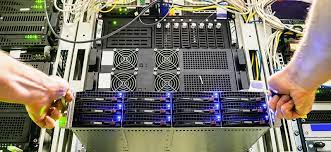
by Sangeetha | Jun 20, 2018 | IT infrastructure services, Server and storage solutions
Data center Hardware Assets – Servers, Storage & Networking Equipment, are provided by OEM. Our Third party support tackles the time, complexity and duplication issues that you can face when starting or growing a business. The recent trend towards hybrid support (OEM & Independent) is popular as OEM’s pricing methodologies demand a significant increase in maintenance charges as the hardware ages.
REASON FOR HYBRID SUPPORT STRATEGY (OEM+ THIRD PARTY MAINTENANCE)
First, to optimize cost, Fortune 100 customers used Third party maintenance as support for their environment. Also, Navigator System maintain stable data center Environment to help invest for the future.
· Cost Benefits:
1. To quantify, TPM pricing is 40-70% higher side than OEM pricing
2. DID YOU KNOW for OEM will increase the price of POST WARRANTY hardware monthly? The older the server or storage device more the cost whereas Third Party Maintenance just the opposite almost reduce the support price as hardware grows older.
3. For better investment & Establishment of relationship, discuss Maintenance Cost Vs Risk Migration
· Flexibility:
1. OEM exists to sell more. We exist to save your money and provide excellent service
2. Flexible SLA are common
3. Think about the complexity of adding/deleting equipment with OEM. If an asset not under support contract, OEM will take weeks of contract of contract adjustment before addressing failed system. Whereas in our service, “Fix First, Question Next” to address your productivity and worry about contract formalities later.
· Service methodologies
1. The spirit of OEM certified field Engineers in solving puzzles and client satisfaction is an important element of service style.
2. OEM perspective is to sell the new product assets to the targeted audience. Whereas we have only service to sell. Therefore the perspective on quality are always rooted in whether or not the client is satisfied
Secondly, Easy to do Business is another reason for customer to think of Navigator system server support and storage maintenance that offers:
· Business concierges – Personalized support and step-by-step guides tailored specifically for your Organization.
· How-to Guides – Technical qualified Engineered to help you understand Issue Fix, Errors and patch upgrade.
· My Business Navigator – an online tool that logs a call through what you need to do.
Hardware maintenance is considered as non-strategic IT spending and procurement that IT service professionals are low-cost alternatives than expensive OEM Contracts.
For more information about Navigator Third Party maintenance solutions. Visit us at www.navigatorsystem.com or call: +91 9986288377 Email: sales@navigatorsystem.com






